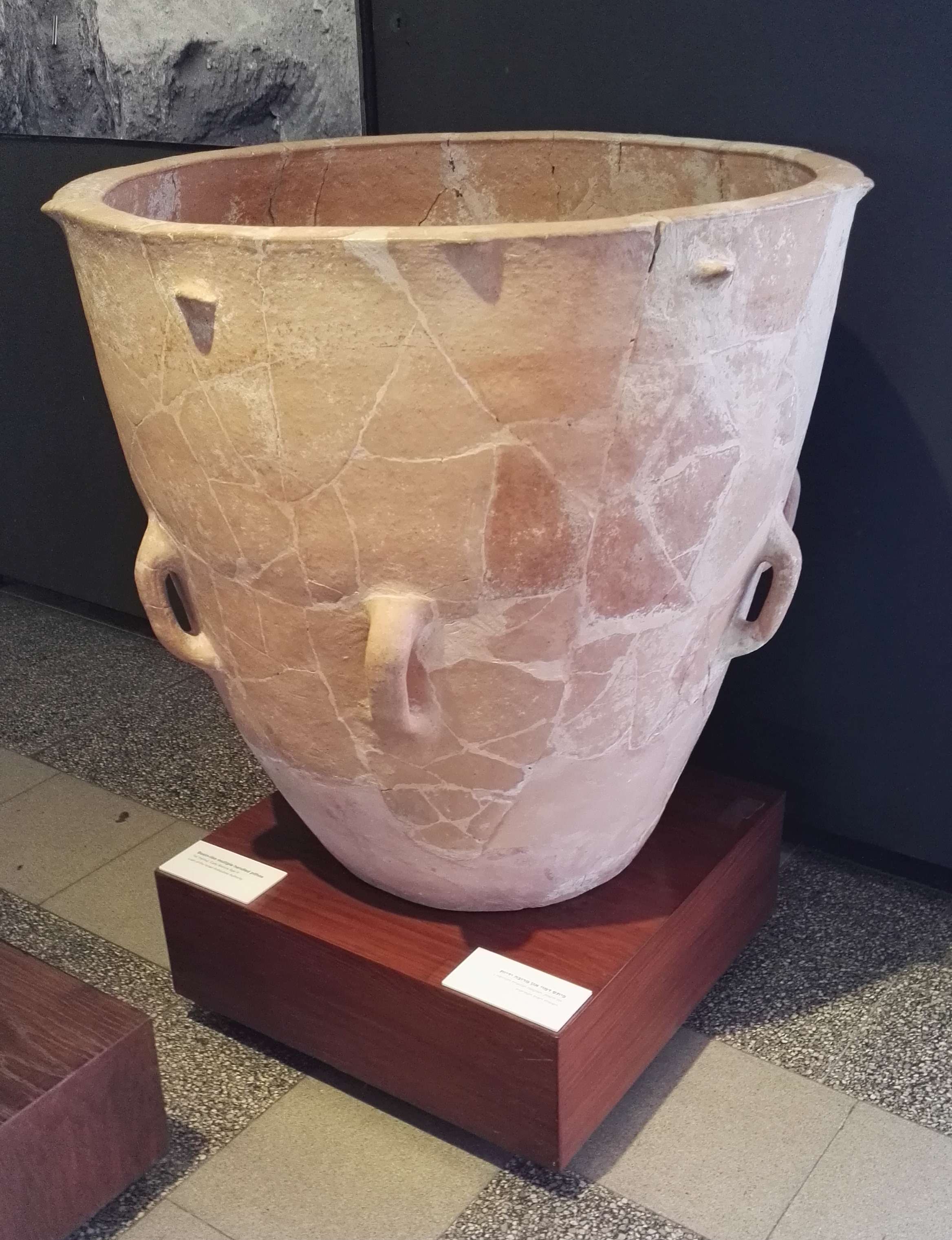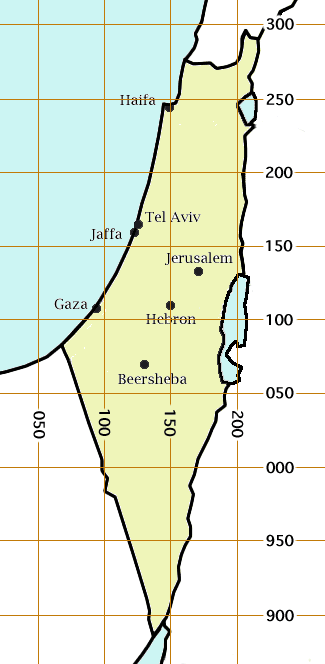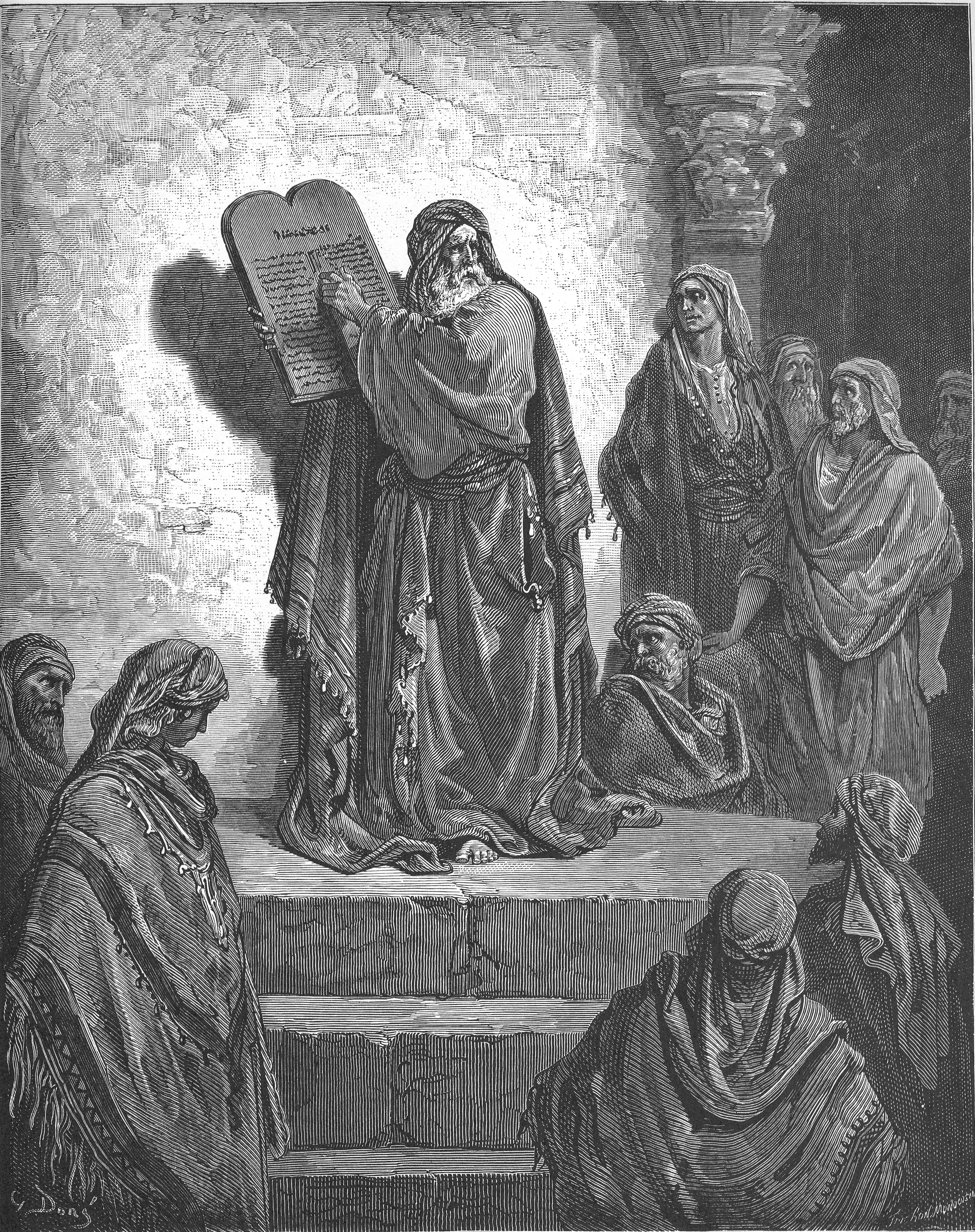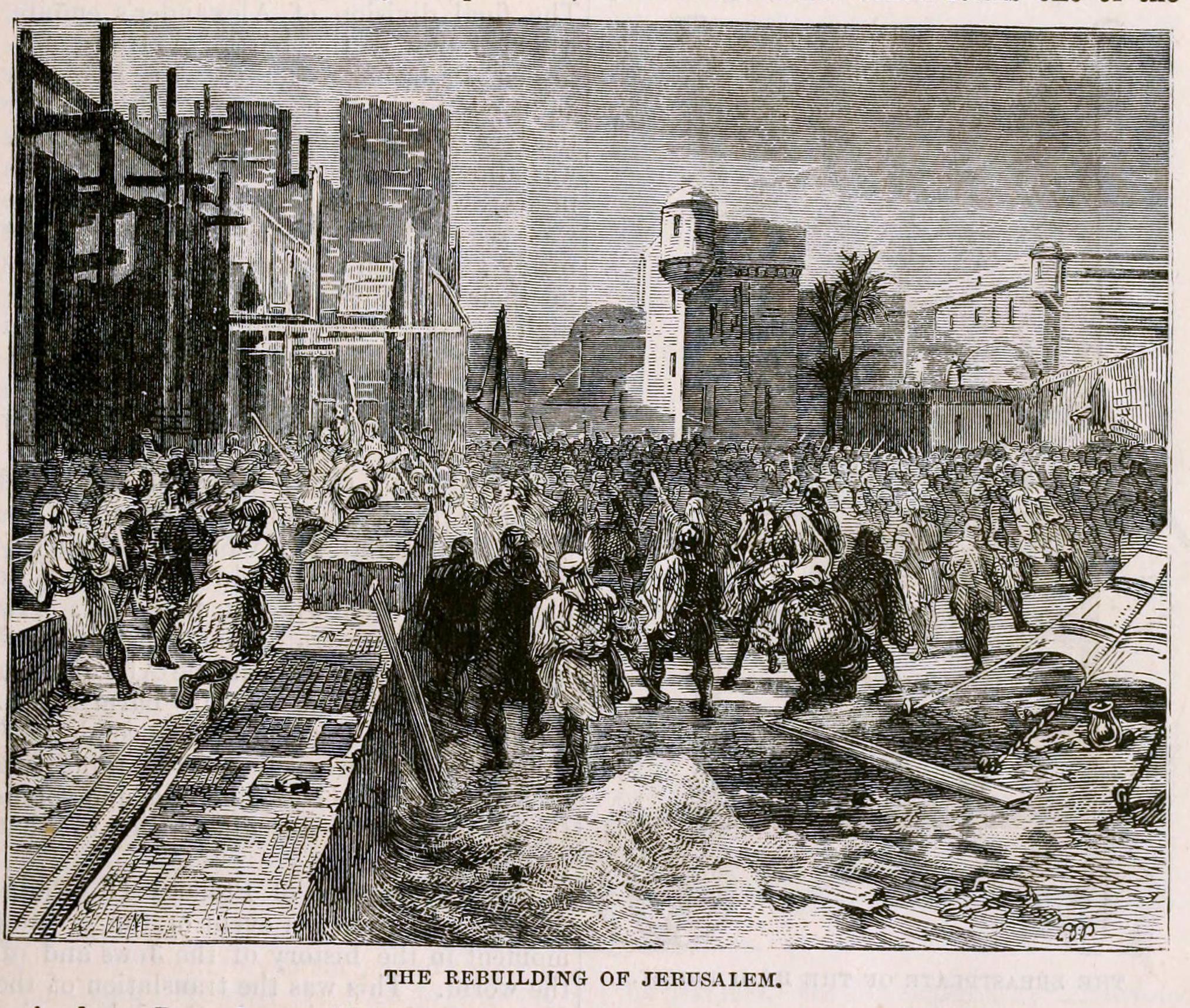|
Tel Yarmuth
Tel Yarmuth (also Tel Yarmouth and Tel Yarmut; Hebrew name) or Khirbet Yarmuk (Arabic name) is an ancient Near East archaeological site in Israel located 25 kilometers southwest of Jerusalem and near modern Beit Shemesh. It is a large single-period (EB II/III) site and has been suggested as possibly being the city of Jarmuth, being only a tentative identification, as it is based solely on the similarity of the Hebrew name with the Arabic name and its areal location. History Early Bronze Age Chronologically the city reached its peak at the same time as the Old Kingdom in Egypt and the Early Dynastic III period in Mesopotamia. After that the city was abandoned, with modest occupation in later periods. Early Bronze period material from Tel Yarmuth has been radiocarbon dated and is being used to support the contention that EB III ended around 2500 BC. Samples tested were "3 from Final EB IB, 15 from EB II, and 19 from EB III". Results were Final EB IB to EB II transition between 30 ... [...More Info...] [...Related Items...] OR: [Wikipedia] [Google] [Baidu] |
Palestine Grid
The Palestine grid was the geographic coordinate system used by the Survey Department of Palestine. The system was chosen by the Survey Department of the Government of Palestine in 1922. The projection used was the Cassini-Soldner projection. The central meridian (the line of longitude along which there is no local distortion) was chosen as that passing through a marker on the hill of Mar Elias Monastery south of Jerusalem. The false origin (zero point) of the grid was placed 100 km to the south and west of the Ali el-Muntar hill that overlooks Gaza city. The unit length for the grid was the kilometre; the British units were not even considered. At the time the grid was established, there was no intention of mapping the lower reaches of the Negev Desert, but this did not remain true. Those southern regions having a negative north-south coordinate then became a source of confusion, which was solved by adding 1000 to the northern coordinate in that case. For some military purpo ... [...More Info...] [...Related Items...] OR: [Wikipedia] [Google] [Baidu] |
Nineteenth Dynasty Of Egypt
The Nineteenth Dynasty of Egypt (notated Dynasty XIX), also known as the Ramessid dynasty, is classified as the second Dynasty of the Ancient Egyptian New Kingdom period, lasting from 1292 BC to 1189 BC. The 19th Dynasty and the 20th Dynasty furthermore together constitute an era known as the ''Ramesside period''. This Dynasty was founded by Vizier Ramesses I, whom Pharaoh Horemheb chose as his successor to the throne. History Background The warrior kings of the early 18th Dynasty had encountered only little resistance from neighbouring kingdoms, allowing them to expand their realm of influence easily, but the international situation had changed radically towards the end of the dynasty. The Hittites had gradually extended their influence into Syria and Canaan to become a major power in international politics, a power that both Seti I and his son Ramesses II would confront in the future. 19th Dynasty Seti and Ramesses II The New Kingdom of Egypt reached the zenith o ... [...More Info...] [...Related Items...] OR: [Wikipedia] [Google] [Baidu] |
Satrap
A satrap () was a governor of the provinces of the ancient Median and Achaemenid Empires and in several of their successors, such as in the Sasanian Empire and the Hellenistic empires. The satrap served as viceroy to the king, though with considerable autonomy. The word came to suggest tyranny or ostentatious splendour, and in modern usage refers to any subordinate or local ruler, usually with unfavourable connotations of corruption. A satrapy is the territory governed by a satrap. Etymology The word is derived via Latin from Greek ''satrápes'' (), itself borrowed from an Old Iranian ''*khshathra-pa''. In Old Persian, which was the native language of the Achaemenids, it is recorded as ''khshathapavan'' (, literally "protector of the province"). The Median form is reconstructed as ''*khshathrapavan-''. It is cognate with Sanskrit ''kshetrapal'' (). The Biblical Hebrew form is ''aḥashdarpan'' , as found in . In the Parthian (language of the Arsacid Empire) and Middle ... [...More Info...] [...Related Items...] OR: [Wikipedia] [Google] [Baidu] |
Persian Empire
The Achaemenid Empire or Achaemenian Empire (; peo, 𐎧𐏁𐏂, , ), also called the First Persian Empire, was an ancient Iranian empire founded by Cyrus the Great in 550 BC. Based in Western Asia, it was contemporarily the largest empire in history, spanning a total of from the Balkans and Egypt in the west to Central Asia and the Indus Valley in the east. Around the 7th century BC, the region of Persis in the southwestern portion of the Iranian plateau was settled by the Persians. From Persis, Cyrus rose and defeated the Median Empire as well as Lydia and the Neo-Babylonian Empire, marking the formal establishment of a new imperial polity under the Achaemenid dynasty. In the modern era, the Achaemenid Empire has been recognized for its imposition of a successful model of centralized, bureaucratic administration; its multicultural policy; building complex infrastructure, such as road systems and an organized postal system; the use of official languages acro ... [...More Info...] [...Related Items...] OR: [Wikipedia] [Google] [Baidu] |
Ezra
Ezra (; he, עֶזְרָא, '; fl. 480–440 BCE), also called Ezra the Scribe (, ') and Ezra the Priest in the Book of Ezra, was a Jewish scribe ('' sofer'') and priest ('' kohen''). In Greco-Latin Ezra is called Esdras ( grc-gre, Ἔσδρας). According to the Hebrew Bible he was a descendant of Sraya, the last High Priest to serve in the First Temple, and a close relative of Joshua, the first High Priest of the Second Temple. He returned from Babylonian exile and reintroduced the Torah in Jerusalem. According to 1 Esdras, a Greek translation of the Book of Ezra still in use in Eastern Orthodoxy, he was also a High Priest. Rabbinic tradition holds that he was an ordinary member of the priesthood. Several traditions have developed over his place of burial. One tradition says that he is buried in al-Uzayr near Basra (Iraq), while another tradition alleges that he is buried in Tadif near Aleppo, in northern Syria. His name may be an abbreviation of ', "Yah helps". In ... [...More Info...] [...Related Items...] OR: [Wikipedia] [Google] [Baidu] |
Artaxerxes I
Artaxerxes I (, peo, 𐎠𐎼𐎫𐎧𐏁𐏂𐎠 ; grc-gre, Ἀρταξέρξης) was the fifth King of Kings of the Achaemenid Empire, from 465 to December 424 BC. He was the third son of Xerxes I. He may have been the "Artasyrus" mentioned by Herodotus as being a satrap of the royal satrapy of Bactria. In Greek sources he is also surnamed "long-handed" ( grc, μακρόχειρ ''Makrókheir''; la, Longimanus), allegedly because his right hand was longer than his left. Succession to the throne Artaxerxes was probably born in the reign of his grandfather Darius I, to the emperor's son and heir, Xerxes I. In 465 BC, Xerxes I was murdered by ''Hazarapat'' ("commander of thousand") Artabanus, the commander of the royal bodyguard and the most powerful official in the Persian court, with the help of a eunuch, Aspamitres. Greek historians give contradicting accounts of events. According to Ctesias (in ''Persica'' 20), Artabanus then accused Crown Prince Darius, X ... [...More Info...] [...Related Items...] OR: [Wikipedia] [Google] [Baidu] |
Babylonian Captivity
The Babylonian captivity or Babylonian exile is the period in Jewish history during which a large number of Judeans from the ancient Kingdom of Judah were captives in Babylon, the capital city of the Neo-Babylonian Empire, following their defeat in the Jewish–Babylonian War and the destruction of Solomon's Temple in Jerusalem. The event is described in the Hebrew Bible, and its historicity is supported by archaeological and extra-biblical evidence. After the Battle of Carchemish in 605 BCE, the Babylonian king Nebuchadnezzar II besieged Jerusalem, which resulted in tribute being paid by the Judean king Jehoiakim. In the fourth year of Nebuchadnezzar II's reign, Jehoiakim refused to pay further tribute, which led to another siege of the city in Nebuchadnezzar II's seventh year (598/597 BCE) that culminated in the death of Jehoiakim and the exile to Babylonia of his successor Jeconiah, his court, and many others; Jeconiah's successor Zedekiah and others were exiled wh ... [...More Info...] [...Related Items...] OR: [Wikipedia] [Google] [Baidu] |
Nehemiah
Nehemiah is the central figure of the Book of Nehemiah, which describes his work in rebuilding Jerusalem during the Second Temple period. He was governor of Persian Judea under Artaxerxes I of Persia (465–424 BC). The name is pronounced or in English. It is in Hebrew , ''Nəḥemyāh'', "Yah comforts". Most scholars believe Nehemiah was a real historical figure and that the Nehemiah Memoir, a name given by scholars to certain portions of the book written in the first person, is historically reliable.For confirmation that many scholars share this view, see For confirmation that most scholars share this view, see For an author who disagrees with the scholarly majority position on the historicity of Nehemiah and Ezra, but acknowledges the existence of that majority, see Book of Nehemiah narrative In the 20th year of Artaxerxes I (445 or 444 BC), Nehemiah was cup-bearer to the king. Learning that the remnant of Jews in Judah were in distress and that the walls of Jerus ... [...More Info...] [...Related Items...] OR: [Wikipedia] [Google] [Baidu] |
Israelites
The Israelites (; , , ) were a group of Semitic-speaking tribes in the ancient Near East who, during the Iron Age, inhabited a part of Canaan. The earliest recorded evidence of a people by the name of Israel appears in the Merneptah Stele of ancient Egypt, dated to about 1200 BCE. According to the modern archaeological account, the Israelites and their culture branched out of the Canaanite peoples and their cultures through the development of a distinct monolatristic—and later monotheistic—religion centred on the national god Yahweh.Mark Smith in "The Early History of God: Yahweh and Other Deities of Ancient Israel" states "Despite the long regnant model that the Canaanites and Israelites were people of fundamentally different culture, archaeological data now casts doubt on this view. The material culture of the region exhibits numerous common points between Israelites and Canaanites in the Iron I period (c. 1200–1000 BCE). The record would suggest that the Israe ... [...More Info...] [...Related Items...] OR: [Wikipedia] [Google] [Baidu] |
Joshua
Joshua () or Yehoshua ( ''Yəhōšuaʿ'', Tiberian: ''Yŏhōšuaʿ,'' lit. ' Yahweh is salvation') ''Yēšūaʿ''; syr, ܝܫܘܥ ܒܪ ܢܘܢ ''Yəšūʿ bar Nōn''; el, Ἰησοῦς, ar , يُوشَعُ ٱبْنُ نُونٍ '' Yūšaʿ ibn Nūn''; la, Iosue functioned as Moses' assistant in the books of Exodus and Numbers, and later succeeded Moses as leader of the Israelite tribes in the Hebrew Bible's Book of Joshua. His name was Hoshea ( ''Hōšēaʿ'', lit. 'Save') the son of Nun (Bible), Nun, of the tribe of Ephraim, but Moses called him "Yehoshua" (translated as "Joshua" in English),''Bible'' the name by which he is commonly known in English. According to the Bible, he was born in Ancient Egypt, Egypt prior to the Exodus. The Hebrew Bible identifies Joshua as one of the The Twelve Spies, twelve spies of Israel sent by Moses to explore the land of Canaan. In Numbers 13:1, and after the death of Moses, he led the Israelite tribes in the conquest of Canaan, and ... [...More Info...] [...Related Items...] OR: [Wikipedia] [Google] [Baidu] |
Shefelah
The Shephelah or Shfela, lit. "lowlands" ( hbo, הַשְּפֵלָה ''hašŠǝfēlā'', also Modern Hebrew: , ''Šǝfēlat Yəhūda'', the "Judaean foothills"), is a transitional region of soft-sloping rolling hills in south-central Israel stretching over between the Judaean Mountains and the Coastal Plain. The different use of the term "Judean Plain", as either defining just the Coastal Plain segment stretching along the Judaean Mountains, or also including, or only referring to, the Shfela, often creates grave confusion. Today the Shfela is largely rural with many farms, but the cities of Ashdod, Ashkelon, Rehovot, Beit Shemesh, and Kiryat Gat roughly surround it. The Bible assigned land in the Shfela to the tribes of Judah and Dan. Biblical references The Shfela is mentioned many times in the Hebrew Bible. (In the King James Version, the Hebrew term "Shfela" tends to be translated as "vale" or "valley.") The Shfela was the site of many biblical battles. During th ... [...More Info...] [...Related Items...] OR: [Wikipedia] [Google] [Baidu] |
Land Of Canaan
Canaan (; Phoenician: 𐤊𐤍𐤏𐤍 – ; he, כְּנַעַן – , in pausa – ; grc-bib, Χανααν – ;The current scholarly edition of the Greek Old Testament spells the word without any accents, cf. Septuaginta : id est Vetus Testamentum graece iuxta LXX interpretes. 2. ed. / recogn. et emendavit Robert Hanhart. Stuttgart : Dt. Bibelges., 2006 . However, in modern Greek the accentuation is , while the current (28th) scholarly edition of the New Testament has . ar, كَنْعَانُ – ) was a Semitic-speaking civilization and region in the Ancient Near East during the late 2nd millennium BC. Canaan had significant geopolitical importance in the Late Bronze Age Amarna Period (14th century BC) as the area where the spheres of interest of the Egyptian, Hittite, Mitanni and Assyrian Empires converged or overlapped. Much of present-day knowledge about Canaan stems from archaeological excavation in this area at sites such as Tel Hazor, Tel Megiddo, En Es ... [...More Info...] [...Related Items...] OR: [Wikipedia] [Google] [Baidu] |












